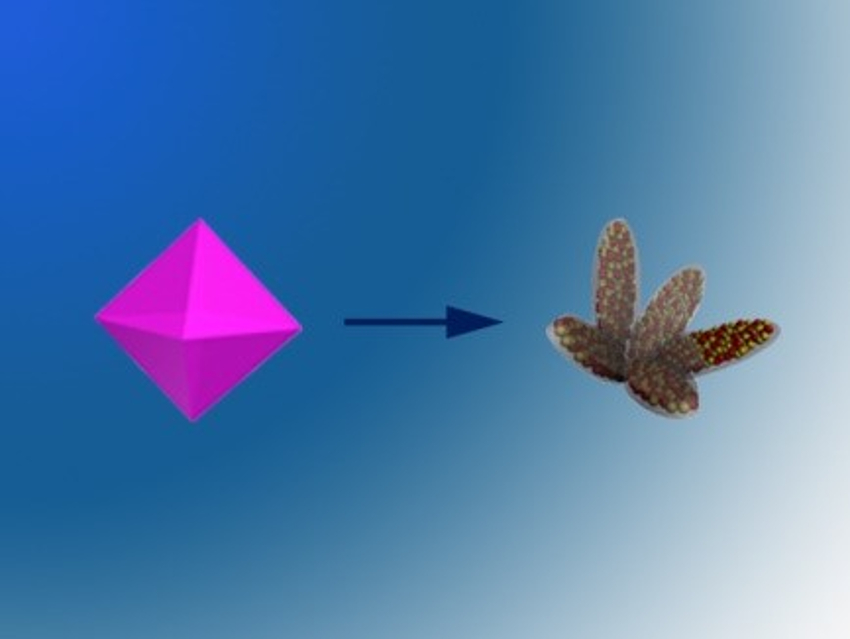High-capacity anode materials are needed to improve the battery life of lithium-ion batteries (LIBs). Transition-metal chalcogenides are possible candidates for this application. However, their electrochemical performance is limited by their large volume expansion during Li+ uptake, which results in capacity fading and structural degradation.
Anqiang Pan, Central South University, Changsha, and Xinjiang University, both China, and colleagues have developed a heterogeneous Fe3O4/Fe7S8/C nanocomposite to be used as an anode material for LIBs. The researchers used a solvothermal method to preprare a Fe-MOF octahedral precursor, which was annealed with sulfur to produce Fe3O4/Fe7S8/C heterogeneous composites (synthesis pictured below). The resulting composites are wrapped in a sulfur-doped carbon matrix derived from the organic framework.
When used in anodes for LIBs, the ternary composite shows better lithium-ion storage properties than either Fe3O4/C or Fe7S8/C nanoplates. The composite’s excellent electrochemical performance can be attributed to its carbonaceous porous structure, small crystallites, and rich phase boundaries that provide many active sites. The same strategy could potentially be used to synthesize other composite phases for high-performance LIBs.

- Sulfur-Doped Carbon-Wrapped Heterogeneous Fe3O4/Fe7S8/C Nanoplates as Stable Anode for Lithium-Ion Batteries,
Kang Chen, Xiangzhong Kong, Xuefang Xie, Jing Chen, Xinxin Cao, Shuquan Liang, Anqiang Pan,
Batteries Supercaps 2019.
https://doi.org/10.1002/batt.201900134The article is part of a joint special issue of Batteries & Supercaps and ChemSusChem focusing on “2D Energy Storage Materials”




